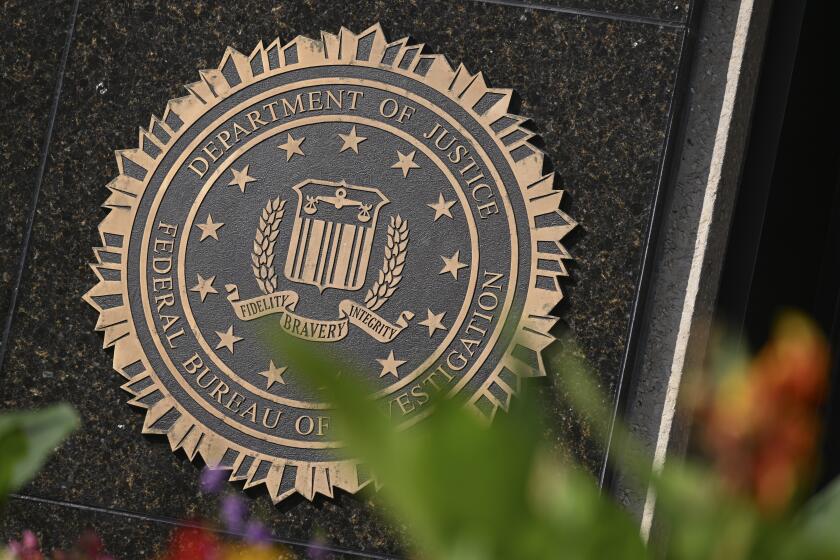Graft Takes the Wheel
It doesn’t take a Harvard degree to figure out that driving here is hazardous to your health. Near-misses, reckless weaving and cars blithely going the wrong way are highlights of the daredevil derby known as New Delhi traffic.
But a recent study by economists from Harvard and other American universities suggests that, indeed, a majority of this city’s drivers get their licenses without actually knowing how to operate a car. They ply the roads legally because of a simple fact: government corruption.
As many as 75% of motorists in New Delhi obtain their permits by hiring agents whose palm-greasing intervention saves them time, energy and the hassle of learning the difference between the brake and the accelerator, the report says.
Those with agents bypass long waits in dingy government offices and almost never have to submit to the road test that’s supposedly required of all would-be drivers. In fact, when newly licensed motorists who participated in the study were given a surprise driving exam, more than 60% flunked.
“We had five questions about how to start a car, how to change gears, and how they worked, which are very basic questions,” said Marianne Bertrand, a professor at the University of Chicago Graduate School of Business and a coauthor of the report. “They couldn’t answer them.”
Evidence of such cluelessness is thick on the ground in India’s capital, where getting from point A to point B is a white-knuckle exercise and traffic safety seems an oxymoron.
Each day, more than 4 million vehicles jockey for position along narrow lanes that wind through ancient bazaars or boulevards originally designed for the horse-drawn carriages and stately cars of India’s British colonial elite.
Rules of the road exist, but mainly on paper. On the streets, it’s the law of the jungle.
Bus drivers cut off motorcyclists, truckers dodge cows, entire families squeeze onto a single scooter, three-wheel “auto rickshaws” zip in between everyone else, and those on foot utter prayers and curses in equal measure.
Lane markings are dismissed as optional; turn signals are for wimps. Vehicles surge through intersections like tidal waves, churning up sprays of dust.
It’s a raucous free-for-all where the most important piece of advice is found painted on the backs of taxis and trucks: “Horn please.”
“They drive like they’re pedestrians. If it’s faster to go the wrong way up the street, they’ll do it. They have no sense of danger,” said one exasperated British executive who ventures out behind the wheel only on weekends. “You have to be vigilant all the time.”
Few cars are without scratches and scrapes, or worse.
In 2004, Delhi Traffic Police logged 9,083 accidents, in which 1,832 people died. That’s an average of five auto-related fatalities a day in a city that boasts 14 million people -- but only 2.6 million licensed drivers, a Transportation Ministry official said. Los Angeles County, home to 10 million people, had about two such deaths a day the same year.
Many accidents here occur at night, when some motorists drive with their lights off, in the belief that their car batteries will last longer.
The chaos on Delhi’s streets is at least partly explained by the findings of the study published last month by economists from Harvard University, the University of Chicago, New York University and the International Finance Corp., an arm of the World Bank.
The scholars were commissioned to look into the effects of government corruption. Their report, “Does Corruption Produce Unsafe Drivers?” (answer: yes), has cast an unflattering light not just on the menace lurking on Delhi’s streets but also on India’s Kafkaesque bureaucracy and the dishonesty it has spawned.
Clandestine payoffs or special favors smooth the way for everything from buying property to acquiring government ration cards. They secure places in good schools for your kids, ensure you prompt attention at the hospital, provide you access to bank loans, exempt you from local building codes.
In a survey four years ago of more than 5,000 Indian households by the organization Transparency International, 100% of those who had dealings with police said they encountered some form of corruption.
These are discouraging realities in the world’s most populous democracy, a rapidly developing land eager to join the club of prosperous, advanced nations and whose greatest modern-day hero, Mohandas K. Gandhi, was almost universally regarded as a paragon of moral virtue.
“The whole country is deep in corruption,” said N.S. Venkataraman, an activist in the southern city of Chennai, formerly known as Madras. “Corruption is there from one end to the other.”
Last year, Transparency International ranked India 88th in its annual honesty index, alongside such countries as Iran and Gabon. Rival China, Asia’s other developing giant and also a magnet for corruption, was 10 slots ahead, at 78. (Iceland was judged the most honest nation; the U.S. ranked 17th.)
The ubiquity of graft here is in large part the byproduct of a monster bureaucracy, one of the world’s largest and probably one of the least efficient. A popular saying has it that the British invented bureaucracy in India, but the Indians perfected it.
Flouting the rules is now such entrenched, almost institutionalized behavior in India that some experts speak of the “industrial organization of corruption,” which is what the American researchers appear to have discovered at work in getting a driver’s license in the capital.
The researchers found that three out of four participants in their study hired agents to obtain their permits instead of going through the normal application process at the New Delhi equivalent of the DMV. Such freelance facilitators are easy to find. Many mill around openly outside the transport offices, waiting for business or approaching likely applicants and offering help in filling out forms, standing in line and talking to the right bureaucrats to hurry the process along.
The economists were unable to witness firsthand what passed directly between the agents and the bureaucrats. But the implications were clear from the fees the agents charged and from the responses they gave to questions put to them by actors hired by the research team to pose as potential clients.
“People asked, ‘Would I have to bribe a bureaucrat?’ And 80% of the time the agents would say, ‘No, no, no, I’ll do the bribing myself,’ ” said University of Chicago professor Bertrand.
By going through an agent, the study found, applicants on average made one fewer visit to the transport office (two instead of three), saw half as many bureaucrats (four instead of eight), cut the length of the process by more than two hours but shelled out more than twice as much money because of the agent fees.
Using an agent, however, also eliminated the benefit to society of having license regulations in the first place: weeding out bad drivers.
Fewer than one in eight applicants who hired an agent had to submit to the supposedly mandatory road test. At the end of the study, 61% of those who acquired a license flunked the surprise driving exam, where “failing meant that the individual knew so little about the workings of the car that the test-giver refused to take him on the road,” the report says.
In a brief telephone interview, Delhi Transport Commissioner V.S. Madan insisted that no one could get a license without first taking and passing the road test. He alleged that the study “does not exist,” calling it “a figment of someone’s imagination.” (It does exist, was funded by the International Finance Corp. and is easily accessible on the Internet by looking up the title.)
When told that a reporter had spoken to two agents who reassured him that they could secure a license without his having to undergo the driving exam, Madan hung up.
The results of the study could help explain why headlines such as the following appear with depressing frequency: “Truck Crashes Into Tree, 12 Wedding Guests Killed” (July 22); “30 Dead as Bus Plunges From Bridge in Western India” (May 2); “51 Killed as Wedding Party Bus Skids Off Road in India’s Northeast” (April 20).
Yet the deadly consequences of unsafe drivers have provoked no outcry against the corruption that lets them loose on the streets. Indeed, the number of inexperienced, potentially incompetent motorists seems only set to rise as India’s car-crazy middle class continues to grow and automobiles become more affordable.
Many Indians are pessimistic about the chances of cleaning up a system rife with dishonesty. Twenty percent of participants in the driver’s license study admitted to having paid bribes in the past for other services as well, such as obtaining passports and land titles.
The impetus for change may have to come from outside, some say -- for example, from multinational companies threatening to pull up stakes out of exasperation with the red tape, bribes and other hidden costs of doing business. Otherwise, a strong, charismatic, clever leader like Gandhi needs to emerge who can put fighting corruption at the top of the agenda, said Venkataraman, the activist in Chennai.
“Mahatma Gandhi was not only a very upright and honest man, but he was an excellent strategist,” Venkataraman said. “The country has to pray that someone comes to power who is not just very honest but able to [rally] people for the cause.”
Until then, motorists and pedestrians will have to keep on praying as well.
More to Read
Sign up for Essential California
The most important California stories and recommendations in your inbox every morning.
You may occasionally receive promotional content from the Los Angeles Times.








